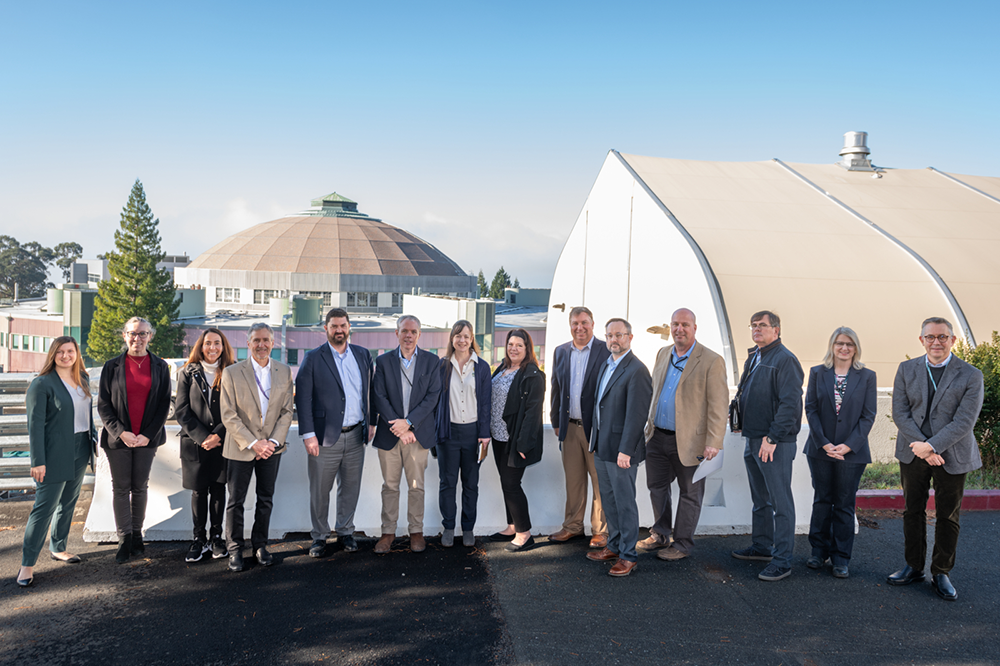The Lab is celebrating the completion of the Old Town Demolition project, the first phase of which was funded in 2013 by the Department of Energy Office of Environmental Management. William White, Environmental Management Senior Advisor, and Jeff Avery, Environmental Management Principal Deputy Assistant Secretary, visited the Lab on Tuesday, Dec. 12, to review the recently cleaned site. The project aimed to make redevelopment-ready acreage available for envisioned research facilities adjacent to the Advanced Light Source, Chu Hall, and a general-purpose laboratory.
The Old Town project oversaw the demolition of seven WWII-era buildings at a cost of $99 million, funded by the Office of Environmental Management. “The Lab is grateful for the resources provided through the Department of Energy’s Environmental Management program, which was made possible by the support of Congress and notably the leadership of the late Senator Dianne Feinstein and others in the California delegation,” says Jonathan Nurse, the Lab’s Director of Federal Relations. “Old Town cleanup activities have helped pave the way for a safer and more modern Berkeley Lab better positioned to carry its clean energy and climate research mission into the future.” Senator Feinstein, who visited the site in 2015, shared her excitement for facility renewal at the Lab and its importance to our country’s mission.
The Lab has committed to limiting development to brownfield sites, typically former Laboratory facility sites where any previous environmental contamination has been abated. Redevelopment requires continual demolition and removal of facilities and infrastructure that no longer serve the Lab’s mission due to functional or seismic obsolescence.
The removed Old Town buildings encompassed over 55,000 square feet on a site that covered 15 acres. Executing a project of this size includes a number of steps beyond just knocking down structures. Preparation can take 2-3 years, including conducting historical site assessments, deactivating and relocating utilities, hazardous materials abatement, and soil clean-up.
“A lot of work goes into a site restoration like Old Town,” says Lisa Ehlers, Project Director with the Projects and Infrastructure Modernization Division. “Our goal is to deliver to the Lab a site ready for development and that furthers the Lab’s mission.”
With developable land at a premium due to the Lab’s location and geography, the Old Town site – renamed Charter Hill – will be a key part of the Lab’s scientific future.
“The cleanup of the Old Town area helps pave the way for future scientific research,” says Carol Burns, the Lab’s Deputy Lab Director for Research and Chief Research Officer. “Our role as a national laboratory offers both the opportunity and the responsibility to conduct world-leading science. The future redevelopment of the Charter Hill site allows the Lab to extend our responsibility and mission.”

